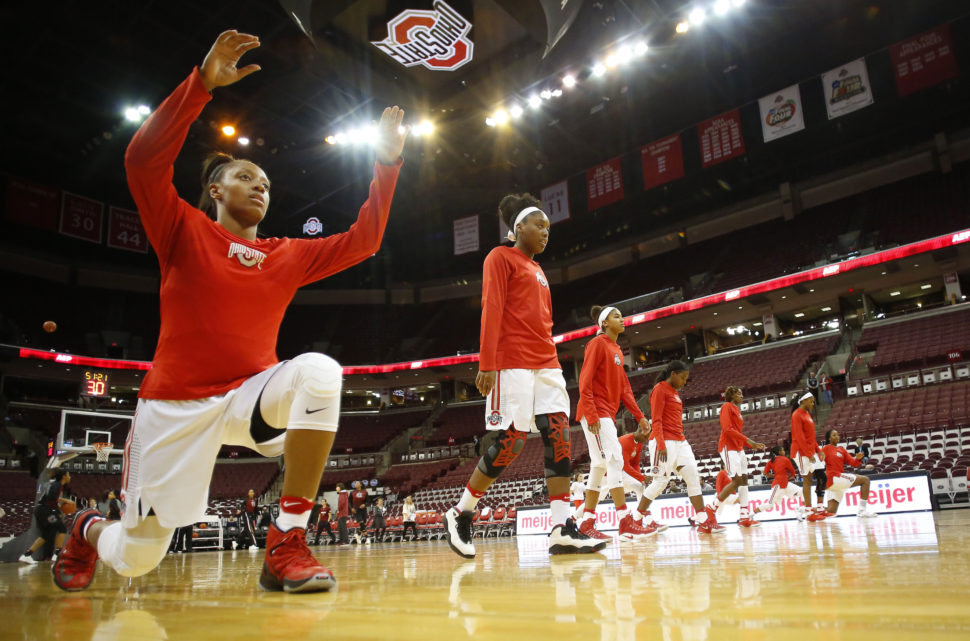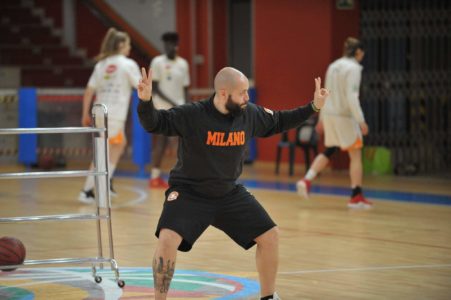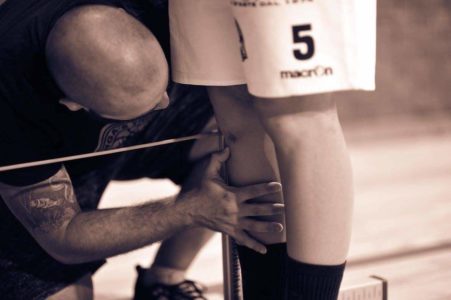
Sport. Female sport. Movement. Warm up. That is what you will find in this article I proposed to a friend and colleague, Raffaele Gennaro, who was born in the Italian region of Calabria but is set in Milan since years. He is an enthusiastic guy and a hard worker, I met him during the International Strength and Conditioning Congress host in Italy since many years. He works at San Gabriele (Sanga) Milan Basketball Academy and he is a very important part of the engine from mini basket to the whole physical conditioning sector of the female club. I asked him, due to his experience, to write about his work and focus on warm up, a key part of every training and game. If a warm up is well managed and with specific goals, it can become a workout itself, even before a match; strategy is very important so. Now let’s see how Raffaele leads his activity!

Hello everybody,
first of all I take this opportunity to immediately thank Alessio for the invitation to write on his website.
I introduce myself, I am Raffaele Gennaro physical Basketball coach and Fms Trainer.
I have been dealing with physical preparation in the female world for several years now, and the classic question that insiders often ask me is not: but between men and women, what differences have you found? My answer is always the same: NONE.
Yes, someone will be able to highlight the structural differences etc, etc, but we are talking about athletes and therefore, the first approach is always mental. I don’t see differences between women and men but only differences between athletes and athletes.
Here, let’s reconnect for this to my brief introduction, FMS Trainer, why did I want to underline it? Simple, the phrase introduced by Gray Cook and Lee Burton is brilliant: Move well, move often. Nowadays, with the fashions of recent years and the exasperation of the word “functional”, trainers, coaches, athletes puts aside the main thing: the movement. Well yes, I am one of those trainers who got bored to hear that magic word always repeated which in the end, functional to what? If we think that we still speak of muscle and not of districts, of specific and no, discontinuous work, can we really say that we are “functional” to what we have in front of us?
Yes, I will seem atypical and strange (actually I am), but I don’t like to face my routine both on and off the court with the famous methods, but I love to study, deepen, analyze, re-study everything and then finally get to my approach to MOVEMENT. You will read this word often, but I prefer to be clear instead of leaving things halfway.
Well finally, we are almost on the court. How? Almost? Oh yes, almost. Before talking about the court, let’s talk about who we have / will have in the gym. My approach to them is very simple and perhaps very similar to that of many professionals.
I approach the athlete with a few simple questions, without ever going further, feedback on past injuries, current physical problems, goals and then from there we finally begin the practical part. Be careful though, if you are lucky enough to collaborate with other medical-health figures (as often happens in my cases), I love to compare my tests with those from the cot.

Questionnaire, cot, finally it’s up to me again. The first test is the Fms one, with in addition other tests on the strength of various muscular districts and some field tests. After all the data collection, I am going to write the dreaded individual cards with the exercises to do pre workout and before my warm-up on the pitch. I usually insert 5-8 exercises depending on the test results, with fairly low repetitions and series. Ah I forgot, dedicate to the movement.
From here, we finally get to step on the court, but I have to open a small parenthesis on this aspect too. It is very important for our figure to have the utmost trust from us and above all sharing by the technical staff. Together we structure the programming and management of loads, from the first pre-season session to the last training session of the year. Honestly, I consider myself lucky, in all these seasons I have met competent people and we have rowed together in the same direction.
I could speak for hours of programming and management of the loads of works from the pre-season onwards, but today we are only getting to know each other, so I would like to face a different topic with you, the warm up. How do you structure your warm-up phase? Always global? Analytical? I tell you my experience in the field.
Knowing how much time I have available and in which session I have the most time, I try to create weekly micro-cycles with specific objectives related to the work of the coaches. Sometimes in the first part of the season, we are also able to insert joint warm-up works, with a general global activation, an analytical part divided into two work groups, one physical and one technical, and then return to a global part with me and then with the coaches.
Within the season instead, as I said before, through micro-cycles I try to work on the global of individual skills and then conclude the work on a specific analytical part.
How much time do I have? How do I structure my work?
Normally I can to carve out 15-20 minutes on the court and therefore I can divide my work.
I love to include in the first part breathing exercises, myo-fascial release and mobility, from here I structure a small work of core training, until you get to a rise in body temperature with gaits.
Depending on the training day, the loads and therefore of programming, I insert in the last minutes dedicated to my part, exercises on rhythm, acceleration and deceleration, explosiveness or principles of speed.
Here is an example of my warm up.
| EXERCISE | SET | REPS/TIME |
| MIOFASCIAL RELEASE:
· Foam roller quad; · Foam roller glute; · Foam roller it band. |
1 per distretto muscolare | 30 sec |
| MOBILITY:
· Ankle; · Hip; · T-spine. |
1-2 | 8-10 |
| CORE STABILITY:
· Dead bug; · Plank; · Plank reach; · Side plank. |
1-2 | 20-30 sec |
| DYNAMIC WARM-UP:
· High-knee walk; · Walking heel to butt; · Backward lunge with hamstring stretch; · High knee run; · Lateral skip; · Lateral shuffle. |
1-2 | 30-40 sec |
As you can see, I have only mentioned a few muscle districts or joints that need mobility. They are in fact only a sign, but as you can see, I have outlined a line on several levels. I like to start from the ground, work both prone and supine, add rotational components, and once you get to the standing upright, I prefer to insert dynamic aspects, both linear and lateral.
Maybe at Alessio’s next invitation, we will deal more specifically with the pre-race warm up.
For any comparison / clarification you can find me on various social networks.
See you soon
Raffo.
Instagram Raffaele Gennaro @gangadagenerazioni
Facebook Raffaele Ganga Gennaro
Leave a Reply